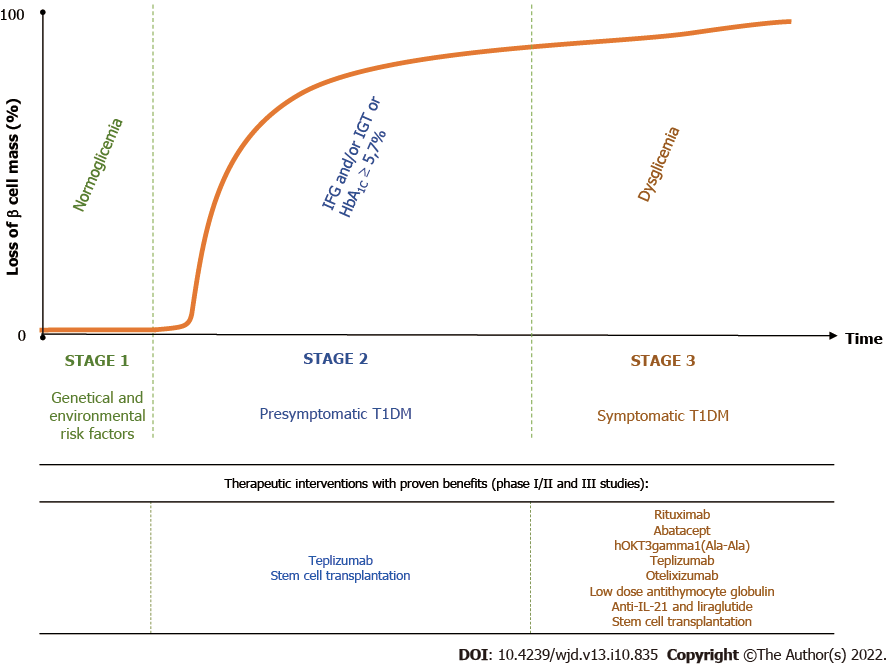Copyright
©The Author(s) 2022.
World J Diabetes. Oct 15, 2022; 13(10): 835-850
Published online Oct 15, 2022. doi: 10.4239/wjd.v13.i10.835
Published online Oct 15, 2022. doi: 10.4239/wjd.v13.i10.835
Figure 2 Stages of type 1 diabetes mellitus and options of therapeutic interventions with proven therapeutic benefits in phase II and III clinical trials.
The interaction between genetic predisposing factors, which are present from birth, and environmental factors trigger the autoreactive process. Stage 1 is characterized by individuals who exhibit at least two of the type 1 diabetes mellitus (T1DM)-associated antibodies (glutamic-acid-decarboxylase-, islet tyrosine phosphatase 2-, islet cell- and zinc transporter 8 antibodies). Stage 2 is characterized by dysglycemia due to reduced β-cell function. Stage 3 represents the onset of clinical T1DM and usually but not always the manifestation of typical symptoms. The application of the previously proposed staging system[12] in clinical trials, which even recognizes the earliest stages of T1DM, can improve the research and development of novel therapies that might delay/prevent the onset of the disease. IL: Interleukin; IFG: Impaired fasting glycemia; IGT: Impaired glucose tolerance; HBA1C: Glycated hemoglobin. Figure adapted from Insel et al[12].
- Citation: Nagy G, Szekely TE, Somogyi A, Herold M, Herold Z. New therapeutic approaches for type 1 diabetes: Disease-modifying therapies. World J Diabetes 2022; 13(10): 835-850
- URL: https://www.wjgnet.com/1948-9358/full/v13/i10/835.htm
- DOI: https://dx.doi.org/10.4239/wjd.v13.i10.835









